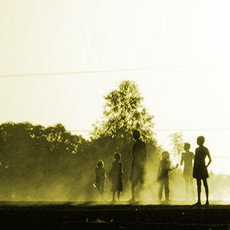Indigenous timeline extended in SA
 It appears that First Nations people occupied South Australia’s Riverland region much earlier than previously believed.
It appears that First Nations people occupied South Australia’s Riverland region much earlier than previously believed.
Flinders University experts in collaboration with the River Murray and Mallee Aboriginal Corporation (RMMAC) have undertaken the first comprehensive survey of the Riverland area, and discovered one of the oldest Indigenous sites along Australia’s longest river system.
The study used radiocarbon dating methods to analyse river mussel shells from a midden site overlooking the Pike River floodplain downstream of Renmark.
The shells – remnants of meals eaten long ago – capture a record of Aboriginal occupation that extends to around 29,000 years, confirming the location as the oldest River Murray Indigenous site yet discovered.
“These results include the first pre-Last Glacial Maximum ages returned on the River Murray in South Australia and extend the known Aboriginal occupation of the Riverland by approximately 22,000 years,” says Flinders University archaeologist and PhD candidate Craig Westell.
Additional Aboriginal sites in the region suggest Aboriginal people lived in an ever-changing river landscape, and provide deeper insights into how Aboriginal people responded to these changes.
The dates ascertained from radiocarbon results essentially bracket the Last Glacial Maximum, when climatic conditions were colder and drier, and when the arid zone extended over much of the Murray-Darling Basin. The river and lake systems of the basin were under stress during this time.
In the Riverland, dunes were advancing into the Murray floodplains, river flows were unpredictable, and salt was accumulating in the valley.
The researchers say it would have been similar to one of the worst droughts on record, the so-called Millennium Drought (from late 1996 extending to mid-2010), providing an idea of the challenges Aboriginal people may have faced along the river during the Last Glacial Maximum, and other periods of climate stress.
“These studies show how our ancestors have lived over many thousands of years in the Riverland region and how they managed to survive during times of hardship and plenty,” says RMMAC spokesperson Fiona Giles.
The study is just one part of a much larger and ongoing research program for a broad-ranging investigation of past and contemporary Aboriginal connections to the Riverland region.








 Print
Print